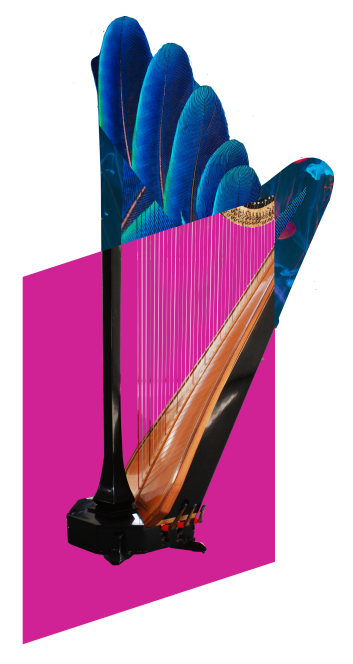Compositional Inspiration

Goals:
Audience will gain a deeper connection to the music through stories or examples of ideas that inspired the composer, and how they relate to musical elements in a piece.
Overview:
Make connections with the composer’s inspiration for the piece. For example,. Messiaen and his inspiration of bird calls, Berlioz’ and his personal stories behind Symphonie Fantastique.
Process
- Identify programmatic elements, personal stories, inspirations for different sounds, inspirations a composer had from visual art, dance, or literary art, etc. in works that you are performing.
- Present these connections to the audience, providing relevant musical examples, if appropriate.
Audience Type

What does this activity look like in action?
Example Script:
Piece: Jessie Montgomery – Starburst
Performer: Jessie Montgomery wrote this piece with the following in mind: “[Starburst] is a play on imagery of rapidly changing musical colors. Exploding gestures are juxtaposed with gentle fleeting melodies in an attempt to create a multidimensional soundscape.” Let’s listen to a snippet of these starbursts, demonstrated by the musicians on stage. [Play excerpt].
Piece: Messiaen – Petites esquisses d’oiseaux
Performer: Composers draw inspiration from so many different places, including nature. Bird calls have been used in music for a really long time! All the way back in 1808, Beethoven used the flute in his 6th symphony to portray the nightingale. The person who wrote our next piece, French composer Olivier Messiaen, studied birds when he wasn’t composing. He loved birds so much that he cataloged bird calls and used them all the time in his music. He used the sounds of robins, blackbirds, larks, and in this next performance, the thrush. Let’s listen to what the thrush sounds like and then hear this piece inspired by the thrush call.

Notes
- The more connections that can be made outside of biographical information the better. Connections to visual art, poetry, dance, etc, or compelling personal or emotional stories from the composer, make this activity more effective.
- This activity is more general and non specific to any single musical element, and can be adapted to fit whatever musical concept you would like your audience to latch on to. To expand, you might look to “Storytelling”, “Scene Painting”, “Introspective Feeling”, “Personal Connection Prose”, “Conversation”, etc. depending on the musical elements you’d like to explore.
Create interactive performances. We have activities to help you connect with your audiences.


